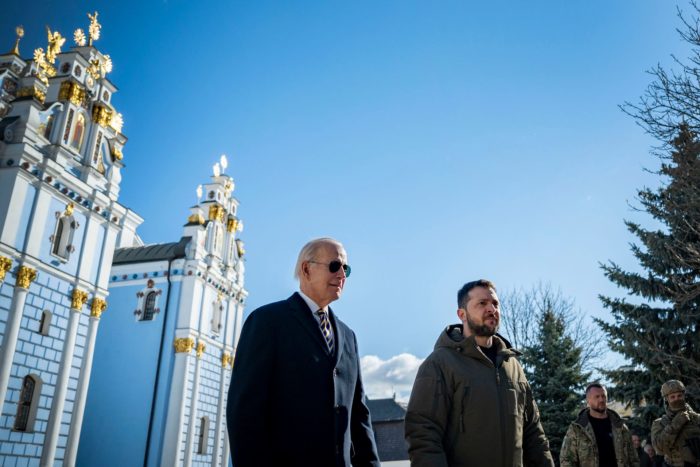The United States is no doubt a major player in the Russo-Ukrainian War. Without Washington's financial and military aid - ranging from Javelins to HIMARS launchers - the balance of power on the battlefield would look very different. So much so that, according to some observers, it is the involvement of the US and its partners alone that feeds the conflict.
In a speech at the European Parliament, the Irish MEP Clare Daly lashed out against Western leaders, accusing them of "forcing (Ukraine) to fight on." In the words of the ex-Labour politician, the suffering of the Ukrainian civilians only feeds the greed of Western corporations.
Her colleague and compatriot Mick Wallace called the conflict a "US, NATO proxy war," where the only winners are the West and its military industry, while "poor Ukrainians die."
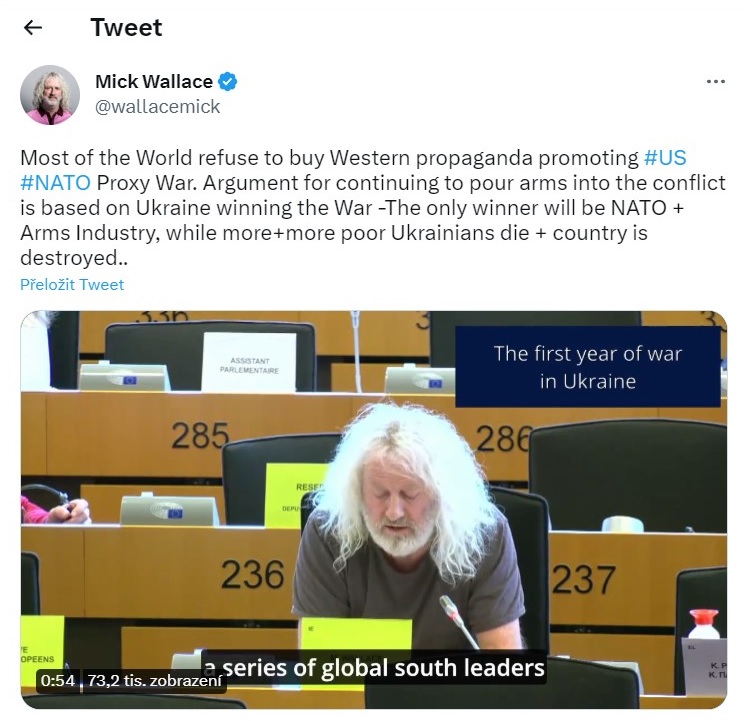
They are not alone in claiming that the Russo-Ukrainian War is Washington’s proxy war, where US interests take precedence over the lives of Ukrainians.
The Kremlin spokesman Dmitry Peskov also denounced the US with "proxy war" allegations, and Putin accused Washington of intentionally prolonging the conflict. In fact, the Russian side has used this narrative since the start of the Donbas War:
"[The United States'] aim is to weaken our positions. The Americans are trying to drag the Russian Federation into an international military conflict, and with the help of events in Ukraine, bring about regime change [in Moscow] and ultimately dismember our country," said Nikolai Patrushev, head of Russia’s Security Council, February 10, 2015
There are two reasons why the "proxy war" narrative is so compelling.
First, it is a very broad term. Browsing through academic literature will uncover a myriad of different answers that assign varying importance to the sponsor's involvement and agenda. If we are to construct the most basic definition, a proxy war occurs when an external power uses a third party, state or non-state, to fight its rival and achieve its strategic goals. The patron generally supports its proxy through political and material support.
Some definitions exclude the possibility of a sponsor taking a direct part in the hostilities, but that would eliminate examples like the Korean War, where the military personnel of both the US (overtly) and the Soviet Union (covertly) took part in the fighting.
A better definition would be that the sponsor may involve itself even through direct military action, but that is usually limited or clandestine in nature.
Casting such a wide net, the US support for Ukraine could be easily squeezed under the label of a "proxy war." After all, American leadership openly states its intent to curtail Russian expansionism through arming Kyiv. Upon meeting President Zelensky in April 2022, the Secretary of Defense Lloyd Austin admitted that the US wishes to see "Russia weakened." Therefore, supporting Ukraine is also in America's interest.
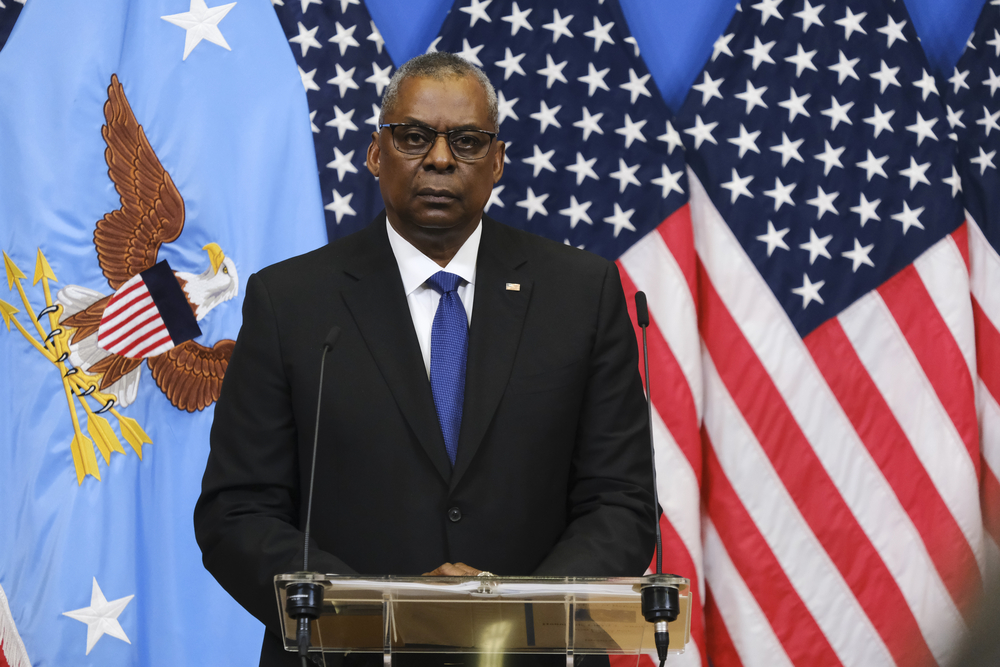
This is likely why even some pro-Ukrainian voices believe using the term is justified. An article in the Washington Post agrees with the Kremlin that the war is indeed a clash between NATO and Russia. However, the author does not use this as a criticism of Western leadership:
"Thanks to Ukraine's incredible resistance, the US and its friends have put Putin on the wrong end of a brutal proxy war. Now Washington just needs to shut up about it."
The problem with using this argument is that it diminishes Ukraine's role and inadvertently plays into the hands of Russian propaganda, as the second important feature of the term is that despite its broad meaning, "proxy war" evokes very particular emotion-laden associations.
During the Cold War, both of the rival superpowers propped up the puppet and allied governments worldwide and used their blood and treasure to wage indirect war against their opponent. Conflicts fed by both Washington and Moscow took place in Korea, Vietnam, Angola, Afghanistan, Ethiopia, and elsewhere.
In the United States' darkest Cold War legacy, the government employed clandestine means to install brutal right-wing dictatorships, for example in Latin America, that committed atrocities and waged wars against their own citizenry. The US proxy wars of the second half of the 20th century came to signify neo-imperialism, neo-colonialism, and the most cynical kind of
realpolitik, where countless lives worldwide were sacrificed on the altar of geopolitics.
The War on Terror could serve as another reference point, as the US employed local proxies on the battlefields of Afghanistan and Iraq. Yet again, these campaigns -- especially in Iraq -- carry no less controversial legacy.
It matters not that in its most basic meaning, "proxy war" could also describe the United States' support of Great Britain in the early years of the Second World War -- a scenario where Russia played the role of Nazi Germany. The real goal is to conflate Ukraine and America, to trivialize the death and destruction of Ukraine, and paint it over with the image of an evil imperialist West.
Painting the United States as a puppetmaster behind Ukraine's war effort has a wide-ranging propaganda potential. The Kremlin uses it to tailor several narratives for specific audiences.
- As illustrated in the article's opening paragraphs, one such narrative aims at left-leaning Western audiences, evoking the dreaded legacy of the Cold War-era cynical foreign policy. America supposedly fights yet another proxy war through a puppet "far-right" government, throwing away resources and lives for its quest for global domination. Needless to say, there are versions for the right-wing audiences as well, packaged under isolationist arguments.
- Another variant targets Ukrainians, convincing them their government is simply a puppet of the American overlords, who will "fight Russia to the last Ukrainian."
- Yet another version of the narrative speaks to the Global South, where the colonial legacy of the West is still heavily present. Already in the Soviet era, the Kremlin wielded the banner of an "anti-imperialist" struggle when seeking alliances in the post-colonial world. Ukraine is thus portrayed simply as an American puppet, while Russia is not invading its smaller neighbor, but resisting the expansionism of Western imperialists.
- For the Russian domestic audience, the Kremlin uses the "fight against the US and NATO" argument to mobilize the population and justify growing sacrifices and invested resources. Before the full-scale invasion, Russian media and pundits (as well as most of their Western counterparts) believed that Ukraine is too weak to put up sustained resistance. One year later, the Russian army suffered massive losses, failed to hold even a single regional capital, and lost the majority of the territory it took in the war's opening phase. As Putin resorted to mobilization, he was forced to justify this radical measure. The Russian army is struggling because it faces the world's leading military superpower, not because of its own shortcomings.
A proxy war in Ukraine?
It is indeed difficult to completely discard the "proxy war" label. We can, however, answer several decisive questions about the US role in the conflict that will reveal how it differs from America's past proxy wars. For example, did Washington prop up the current government in Kyiv? Did it initiate and does it fan the conflict? Are Ukrainians fighting mainly in America's interest, rather than their own? Or, in short, is America truly Ukraine's puppet master?
1. The US did not install a puppet regime in Ukraine
While seemingly distant, the Euromaidan Revolution plays a major role in the contemporary "proxy war" narrative. A widespread conspiracy claims that the Revolution of Dignity of 2013-2014, which ousted the pro-Russian president Yanukovych, was a coup orchestrated by the West. This claim is getting a lot of traction recently and is promoted by high-profile figures like Elon Musk.
Since 2014, as the conspiracy goes, Washington holds sway over Ukraine's politics, making it effectively its puppet state. Taking away the agenda from Ukrainians and assigning it to the US at the very genesis of the Russo-Ukrainian conflict justifies the proxy war claim. If you believe Ukraine is ruled by a US-installed puppet regime, you will no doubt also believe they fight primarily in America's interest.
Nevertheless, this is merely a conspiracy theory without any real foundation.
a) By its very definition, the Euromaidan Revolution was not a coup d'etat.
Coups are executed through violent means by small but powerful groups from political or military circles.
In comparison, the Euromaidan Revolution was a mass, grassroots event, involving around 20% of Ukraine's population throughout the whole country and was represented all across the ideological and demographic segments of the nation. There was no unified leadership - opposition politicians like Arseniy Yatsenuk and Vitali Klitschko did not have a mandate from the protesters. Rather, they functioned as facilitators of negotiations between Euromaidan and Yanukovych.
The Revolution began as peaceful protests until the government forces tried to break it through violent means, using the riot police, hired thugs, and snipers. The resulting clashes led to the death of 108 civilians and 13 law enforcement officers.
In the end, Yanukovych was not toppled through violence. Seeing the tables turn against him, he signed a settlement with the opposition on February 21, promising constitutional changes and early elections. Shortly after, he fled his residence to Crimea and then to Russia. After an interim period, Petro Poroshenko won the election in May, leading to a peaceful transition of power. International observers described the vote as "largely in line with international commitments and fundamental freedoms."
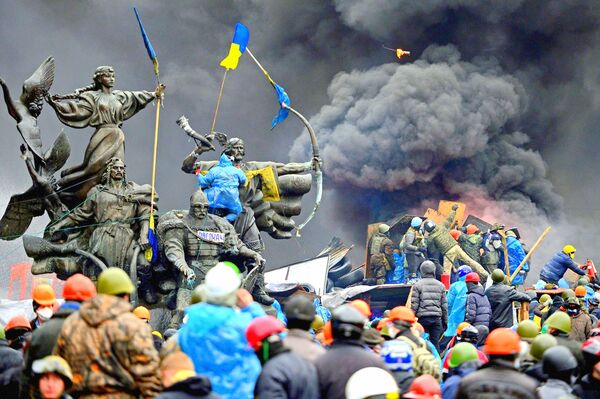
b) There is no evidence of Washington orchestrating the Euromaidan Revolution.
It was in Putin's interest to delegitimize the new government in Kyiv, as it was a massive blow to his influence over the country. To that effect, the Kremlin began to spread a narrative about a US-orchestrated coup, which was gratefully shared by Western anti-establishment outlets.
One such accusation centered around a leaked call between the US Assistant Secretary of State Victoria Nuland and the US Ambassador to Ukraine Geoffrey Pyatt, where the two discussed their preferences for Ukrainian opposition leaders. The Kremlin, whose intelligence services were behind the leak, portrayed it as evidence that Washington is the mastermind behind the Revolution.
Nevertheless, the call took place long after the Euromaidan events began, making it hardly evidence of the US orchestrating the Revolution. It also took place long before Yanukovych's flight, meaning that the new cabinet that Nuland and Pyatt were discussing was to be a result of an agreement between the government and the opposition; it was not a plan of a regime change. Finally, apart from revealing their preferences and planning talks with the opposition figures, neither of the US diplomats stated anything that could serve as evidence of nefarious manipulation or strongarming.
Another apparent "smoking gun," also fired by Nuland, refers to her statement that the US invested $5 billion into developing Ukraine's democratic institutions and good governance. Russian propaganda twisted this as an admission of the US financing the Revolution, while in truth, the figure referred to the whole sum invested into Ukraine's development since 1991.
c) Obama administration was hesitant toward Ukraine and tried to avoid confrontation with Russia.
Already in the early years of Obama's term, Washington sought to improve the relationship with Moscow as part of the so-called "Russian reset" policy. Although the occupation of Crimea and the war in Donbas had proven the folly of this strategy, it cast a long shadow over Obama's later words and actions.
In March 2016, Obama described Ukraine as "Putin's
client state" that was "slipping out from his grasp," drawing a comparison to Assad's Syria.
He also added that Ukraine represented a "core interest" for Moscow - unlike for Washington - and was fated to be "vulnerable to military domination by Russia."
"We have to be very clear about what our core interests are and what we are willing to go to war for," -- Barack Obama, March 2016.
This eerily resembles the arguments of realist scholars like John Mearsheimer, who even today refer to Ukraine as Russia's sphere of interest.
When the fighting in Donbas broke out, the Obama administration refused to provide lethal aid to the Ukrainian Armed Forces, and the sanctions against Russia following the Crimea occupation have been described as toothless. The first lethal aid in the form of Javelin anti-tank launchers was provided in 2017 under the Trump administration, and the weapons were approved to be used at the front only three years later.
Ukraine was simply not at the center of America's focus. At the time, Washington was more concerned with the war in Syria and, as it is now, with the growing geopolitical challenge from China.
The United States would make for a hesitant, lukewarm puppetmaster indeed.
2. Ukraine pleads for weapons to protect itself, while the US hesitates
It is a common argument that the US and its partners feed the war in Ukraine through massive arms supplies. This creates the impression that it is primarily an American initiative to supply Ukraine and that the US military aid somehow drags helpless Ukrainians into further senseless bloodshed.
a) Ukraine itself pleads for further military aid.
Since the start of the full-scale invasion, Western military aid, while vital for the war effort, is supplied piecemeal and in reaction to sustained pressure from Kyiv.
From top to bottom, Ukraine works in unison to secure further military aid from its partners, be it through direct diplomatic efforts, various initiatives or demonstrations organized by the Ukrainian diaspora, or direct appeals to the international public from President Zelensky.
Even so, the most vital pieces of Western hardware provided to Ukraine were painstakingly negotiated after months of effort. The US provided its HIMARS missile launchers only in the summer of 2022 and the transfer of modern Western tanks was approved at the beginning of 2023 - almost a year after the full-scale war began. The transfer of MiG-29 jet fighters, finally approved this February, went through an embarrassing series of back-and-forth declarations and retractions by the US and its allies.
The next desired prizes of the Ukrainian armed forces, like the F-16 jet fighters or the long-rage ATACMS missiles, continue to face similar obstructions.
b) US military aid is comparably modest.
In total numbers, US military aid to Ukraine seems impressive. When put into perspective, however, Washington spends far beneath its capacity, and certainly less than it spent in its past proxy wars.
The US spent 0.21% of its GDP on military aid for Ukraine over the period of 12 months. According to the Financial Times, this is somewhat less than one year's cost of Washington's involvement in the Afghanistan War, three times smaller than the yearly costs of the Iraq War, and a staggering 13 times less than the Korean War.
In terms of total GDP share sent to Ukraine, the US is even lagging behind Poland and the Baltics. This illustrates who has the highest stakes in the result of the conflict - the countries closest to Russia and most vulnerable to Russian aggression.
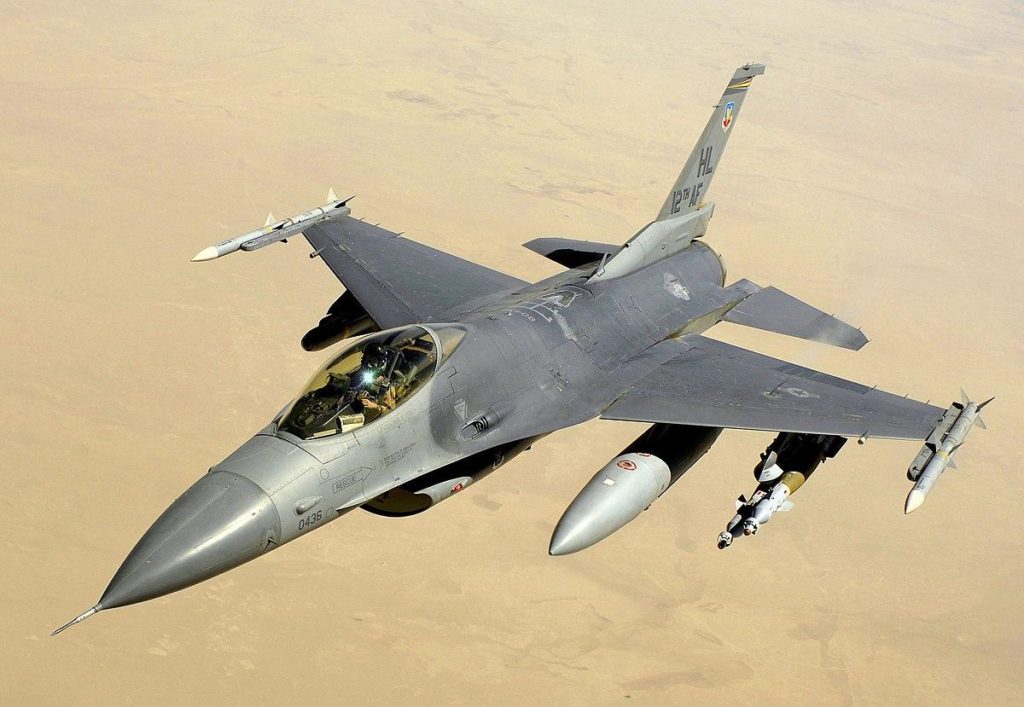
3. A prolonged conflict might be damaging to the US
A potential retort to the previous argument is that perhaps the American restraint is calculated. Maybe the US does not want a swift Ukrainian victory, hoping instead to drag Russia into a long, bloody slog. Here are the reasons why this seems highly unlikely:
a) A prolonged war can exhaust the West and Ukraine while benefitting Russia.
It is far from certain that prolonged war would be in Ukraine's and the West's favor. Russia can still draw on greater human and material resources than Ukraine, and polls indicate that the Russian population maintains high war morale. According to the independent Levada Center, 75% of Russians support the war even by January 2023.
Conversely, Ukraine's partners have to deal with the growing war weariness among their population, exacerbated by the economic fallout.
Western unity may soon begin to crack. The two hopefuls of the Republican party for the 2024 presidential election, Donald Trump and Ron DeSantis, voiced criticism of the continued military aid to Ukraine.
This sets the stakes even higher, as Putin's victory in Ukraine despite the West's support would cause a domestic political blowback for the incumbent Western leadership and could have serious repercussions for future foreign policy.
A much more likely explanation for why the West is drip-feeding military aid -- apart from logistical challenges -- is the fear of escalation. At the current state, it seems unlikely that Russia could expand its war also against NATO. This does not mean that Western leaders do not take Putin's threats seriously, particularly those about nuclear retribution.
Concerns about World War III and nuclear exchange continue to put brakes on military aid to Ukraine.
b) The US was trying to avoid the war to begin with.
While the US is now using the opportunity to curtail Russia's expansionism, Biden's past words and actions prior to February 24, 2022, show that he was in fact trying to avoid the conflict.
While threatening Russia with sanctions and affirming diplomatic support for Kyiv, Washington was sending clear signals that it will not go into a direct confrontation with Moscow. Already in the spring of 2021 during the first Russian military buildup, the US canceled the deployment of two warships in the Black Sea following complaints from Moscow.
"We have no desire to be in an escalating war with Russia," one senior US official said.
During the second Russian buildup in late 2021/early 2022, Biden openly admitted that the US military will not defend Ukraine in case of an invasion. The US president even suggested that if Russia conducts only a "minor incursion," there might not be a unified response from the West.
Steering away from a direct confrontation, the Western leaders tried to defuse the tensions and entered into negotiations with Putin.
Reportedly, Washington was even slowing down weapon shipments for Ukraine to give a chance for a diplomatic solution. While setting red lines on decisions with too much of a geopolitical cost, like withdrawing NATO forces from the Alliance's eastern neighbors -- an internal issue of the Allies -- or limiting NATO's open door policy, Biden was open to discussing security guarantees for Russia. He was, for example, willing to talk about the ban of strategic weaponry on Ukraine's territory, should it ever join the Alliance. Biden also added that Ukraine is unlikely to become a member anytime soon.
As negotiations led nowhere, NATO countries began to secure their borders. By the time the Alliance reinforced its flank and put the dislocated troops on standby, it was already January 2022, months after the Russian military buildup began. The West was simply playing catch-up, while the initiative was with the Kremlin.
4. Ukrainians fight united for their own independence, territorial integrity, and statehood
The motivations behind Ukraine's resistance are perhaps the most crucial point.
While not a necessary part of the definition, many of the past proxy wars were, in some way, internal conflicts, with the sides divided by ideology or geopolitical allegiance. This carried grave moral implications: citizens of these war-torn states were fighting and dying for foreign interests. The main stakeholders of the conflicts were the two superpowers, who intended to add another country to their geopolitical and ideological bloc, or at least to snatch away a client state from their opponent.
Ukraine aid critics argue that this is precisely the source of the conflict -- the US is trying to snatch Kyiv from the Russian sphere of interest by expanding NATO eastwards.
a) Ukraine's NATO aspirations are a direct result of Russian aggression.
Ukraine does not hide its ambitions for EU and NATO membership. After all, in 2018 these goals were added to the country's constitution as central foreign policy objectives. The westward direction enjoys broad support among the population. Recent numbers reveal that 86% of Ukrainians support joining NATO and 87% support accession to the EU.
This has not always been the case, especially concerning NATO. In a poll from 2009, the Alliance membership found support only among 28% of Ukraine's population, with 51% being against it. The aversion was especially prevalent in the eastern regions.
By July 2015, after the occupation of Crimea and the beginning of the Donbas War, NATO's support rose to 64%, while the opposition to the membership dropped to 21%.
The Alliance membership represents the means of safeguarding independence and territorial integrity, which are, now more than ever, under threat.
b) Ukraine fights for its very survival, not for outsiders' geopolitical goals.
Unlike in the pre-2022 phase of the conflict, Moscow dropped any pretenses about respecting Ukraine's sovereignty and set out toward a blatant war of conquest, even declaring annexation of Ukrainian territory. The genocidal rhetorics by the Russian media and state officials target the very idea of Ukrainian nationhood and statehood. All indicates that the Kremlin's endgame is to uproot Ukraine as a whole.
"Denazification will inevitably include de-ukrainization — the rejection of the large-scale artificial inflation of the ethnic component in the self-identification of the population of the historical Malorossiya and Novorossiya territories, which was started by the Soviet authorities," -- Timofey Sergeytsev, RIA Novosti, April 4, 2022.
There is little division among Ukrainians about continuing the resistance. According to polls, 85% of Ukraine's population is against any territorial concessions and 86% support continued resistance until victory, even despite Russia's terror bombing. These responses had the majority support even among the Russian-speaking respondents and in eastern regions. Furthermore, 84% of Ukrainians responded they trust President Zelensky and 96% trust their armed forces.
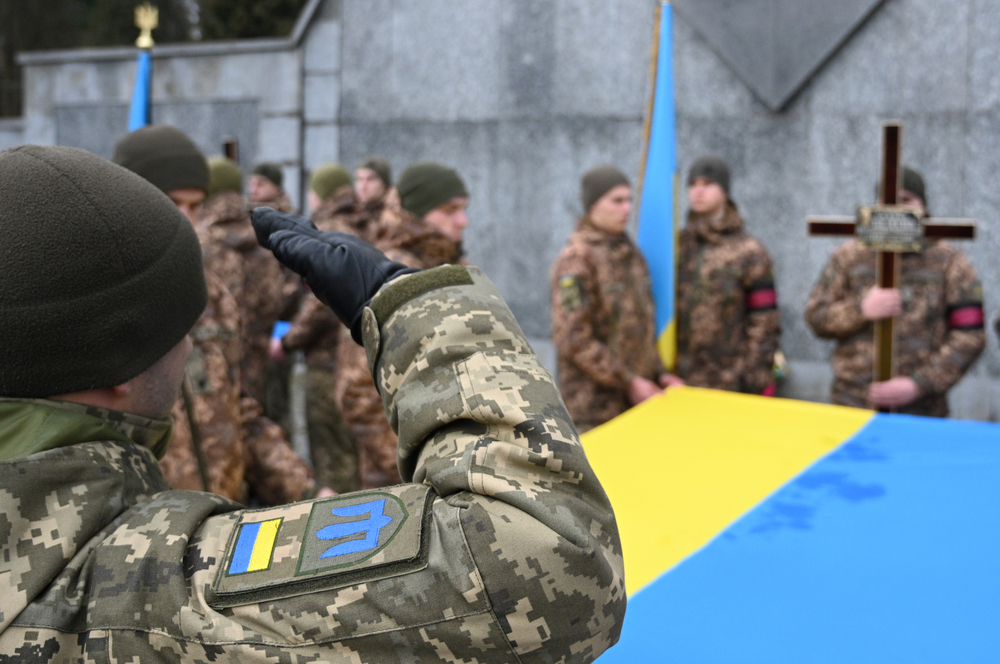
As employed by Russian propaganda, the "proxy war" narrative reduces the world's stage to the interests of a few major powers without concern for smaller and mid-sized nations. Giving these "minor" countries a voice and understanding their motivations, experience, and convictions can disrupt this simplistic worldview.
Even on the other side of the barricade, Ukraine's supporters are sometimes seduced to see the war mainly from the prism of a civilizational clash, of a struggle between authoritarianism and democracy, between Russia and the West. Whatever merit this position has, it again reduces Ukraine into an appendage of some bigger bloc while diminishing Ukraine's agency. It is also counterproductive, as it saddles Ukraine with the difficult baggage of the US geopolitical history and foreign policy mishaps.
Finally, reducing Ukraine to nothing more than Washington's proxy simply misses the mark. The motif recurring in this analysis is that, more often than not, the role of the United States is that of a "second responder," reacting -- sometimes with hesitation -- to the unfolding events, from the Euromaidan Revolution to this day.
Ukraine has extremely high stakes in the game. A portion of its territory remains occupied, and its people continue to die daily. Seeking outside help against a much bigger opponent is simply one of the means to ensure the country's survival.

